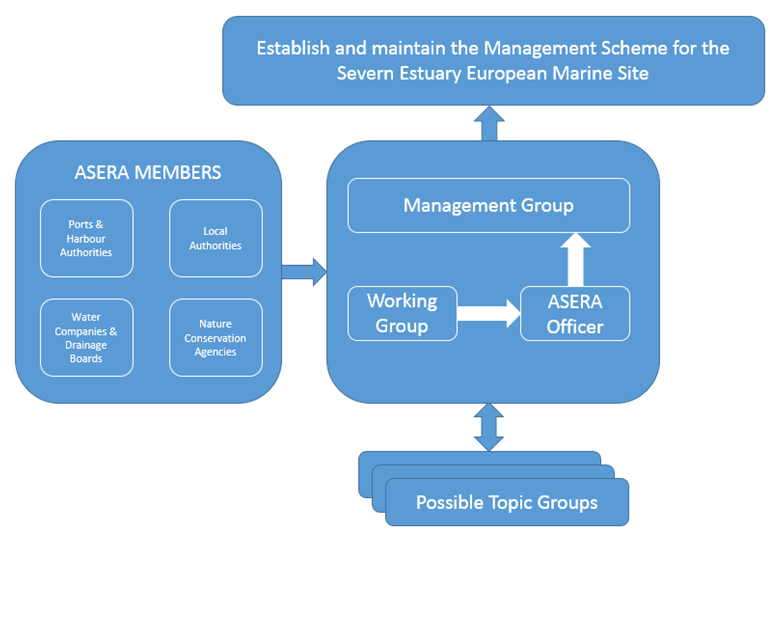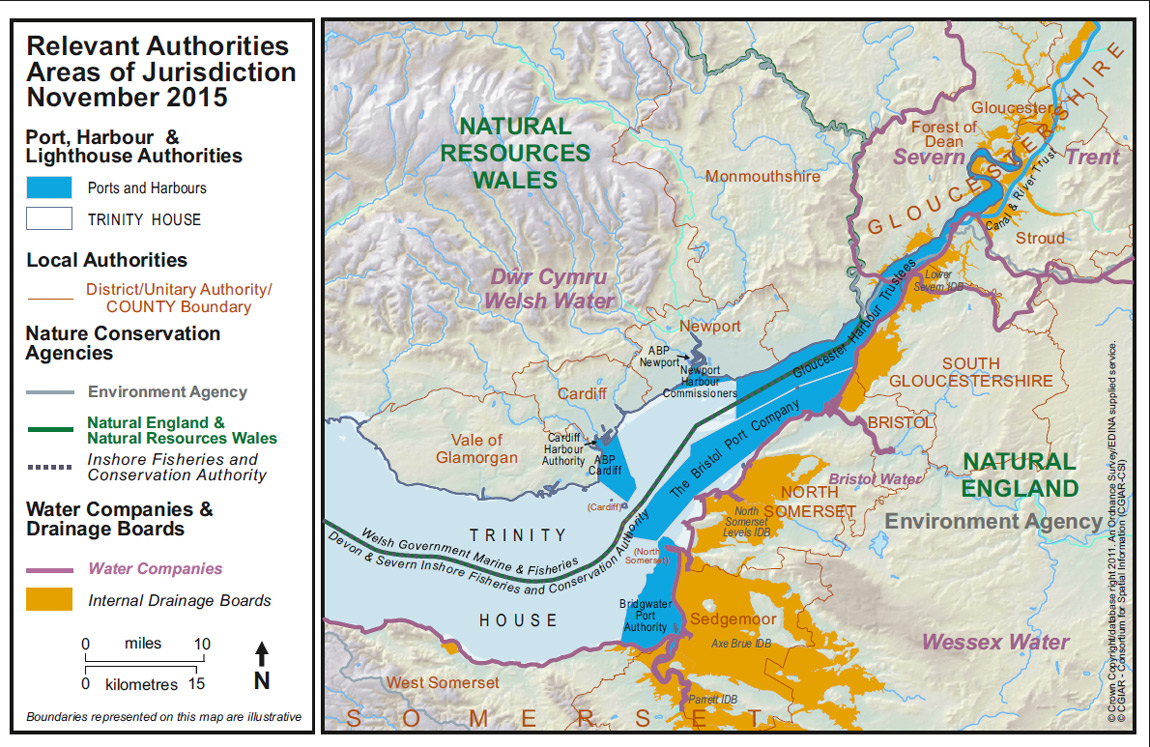Welcome to the Association of Severn Estuary Relevant Authorities (ASERA) website!
This site provides information on the role ASERA plays in protecting the Severn Estuary European Marine Site, why the Severn Estuary is so special and the reasons for its many national and international designations.
Where?
The Severn Estuary lies on the south-west coast of Britain at the mouth of three major rivers; the Severn, the Wye and the Avon. The immense tidal range (the second highest in the world) and classic funnel shape make the Severn Estuary unique in Britain and very rare worldwide. The Estuary is a dynamic and diverse area with fascinating natural, cultural and geographical features, managed and used by a wide variety of organisations and individuals. It therefore has a range of conservation designations which you can find more about by visiting our Severn Estuary designations page.
Who is ASERA?
ASERA was formed in 1998 in recognition of the practical and resourcing difficulties authorities would face if they were to individually attempt to discharge their statutory duties, in respect of the Habitats Directive. It is intended that through ASERA, the Relevant Authorities will be able to discharge their statutory duties in the most efficient and cost effective way possible. Given the statutory duties that all Relevant Authorities share, and the benefits of sharing costs for discharging them, ASERA represents the large majority of Relevant Authorities on the Severn Estuary.
What do ASERA do?
The key focus of the Association is to establish and maintain a single management scheme for the Severn Estuary European Marine Site (EMS). Under the management scheme, the functions of the Relevant Authorities are exercised to achieve the requirements of the European Habitats and Birds Directives.
What is the role of ASERA?
Competent and Relevant authorities have a statutory duty to ensure that they carry out their functions in compliance with the EC Habitats Regulations. The Regulations make provision for Relevant Authorities to establish a management scheme for a European Marine Site. ASERA is responsible for establishing and maintaining the Management Scheme for the Severn Estuary European Marine Site (EMS), which is comprised of the following:
- Severn Estuary Special Area of Conservation
- Severn Estuary Special Protection Area
- Severn Estuary Ramsar Site
The SPA, SAC and Ramsar designations cover the intertidal and subtidal areas eastwards of a line between Lavernock Point on the Welsh coast and Brean Down on the English coast. This designation requires that the site be managed so that natural habitats and wild species listed on the Annexes to the Directive are maintained or recovered to a favourable conservation status.
The Management Scheme is intended to provide a mechanism for Relevant Authorities to set the framework within which their activities will be managed. It aims to construct a clear picture of the effects of current use and will establish whether additional measures are required to meet the conservation objectives of the site. The Management Scheme allows the Relevant Authorities to discharge their statutory duties in compliance with the requirements of the Habitats Directive.
Take a look at the ASERA Constitution by clicking the button below.
What is the Management Structure of ASERA?

ASERA Management Group Representatives are drawn from the four main groups of Severn Estuary Relevant Authorities (see diagram). This group facilitates and directs the development and implementation of the Management Scheme. It may also establish specific sub-groups to consider the development and operation of the Management Scheme to focus on particular areas of the European Marine Site or to address specific topics.
The ASERA Working Group meets when required and was set up as sub-group of the Management Group to assist the Implementation Officer with administration and drafting of the Management Scheme, including the provision of detailed comments on various chapters. The ASERA Implementation Officer undertakes and facilitates the preparation, implementation and monitoring of the Management Scheme on behalf of ASERA members.

